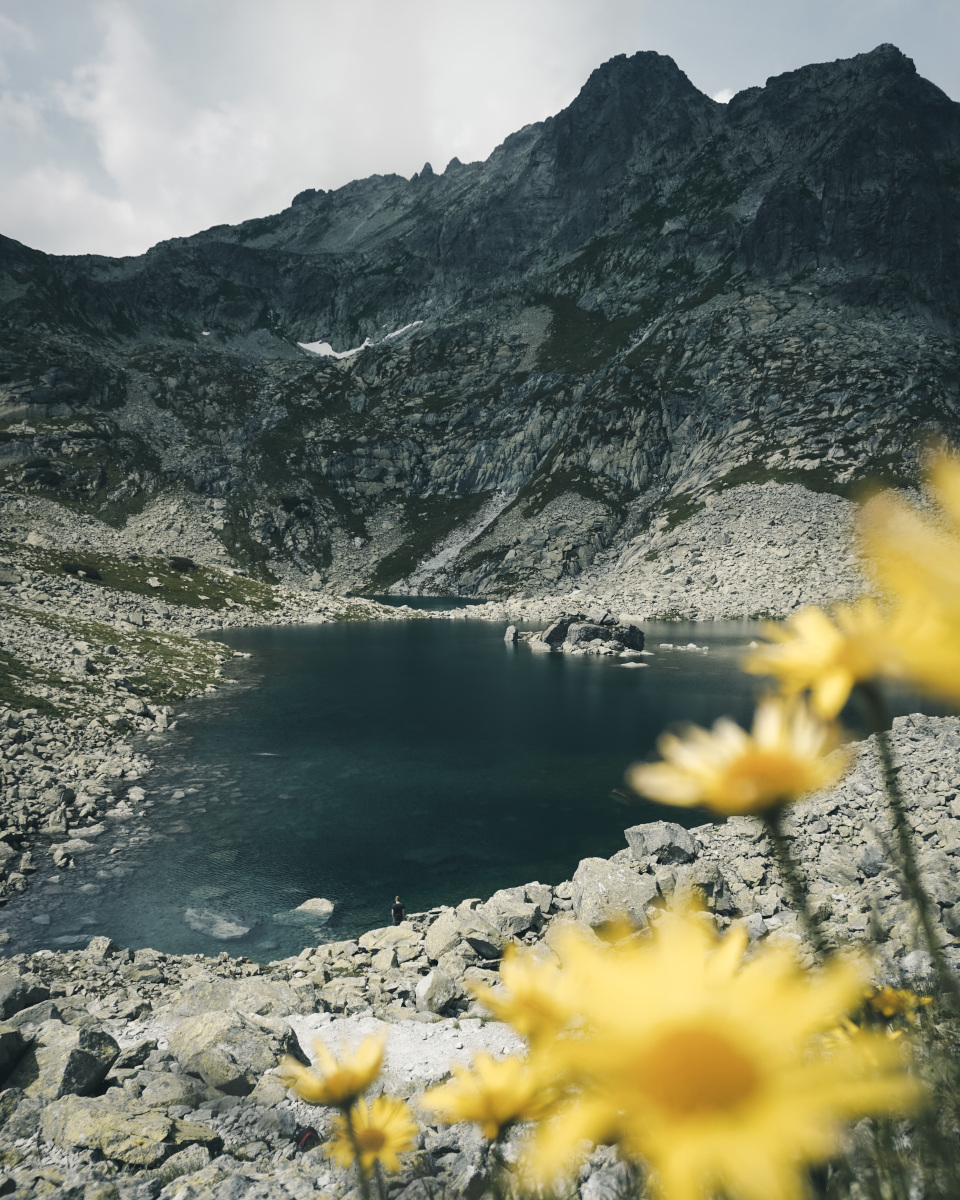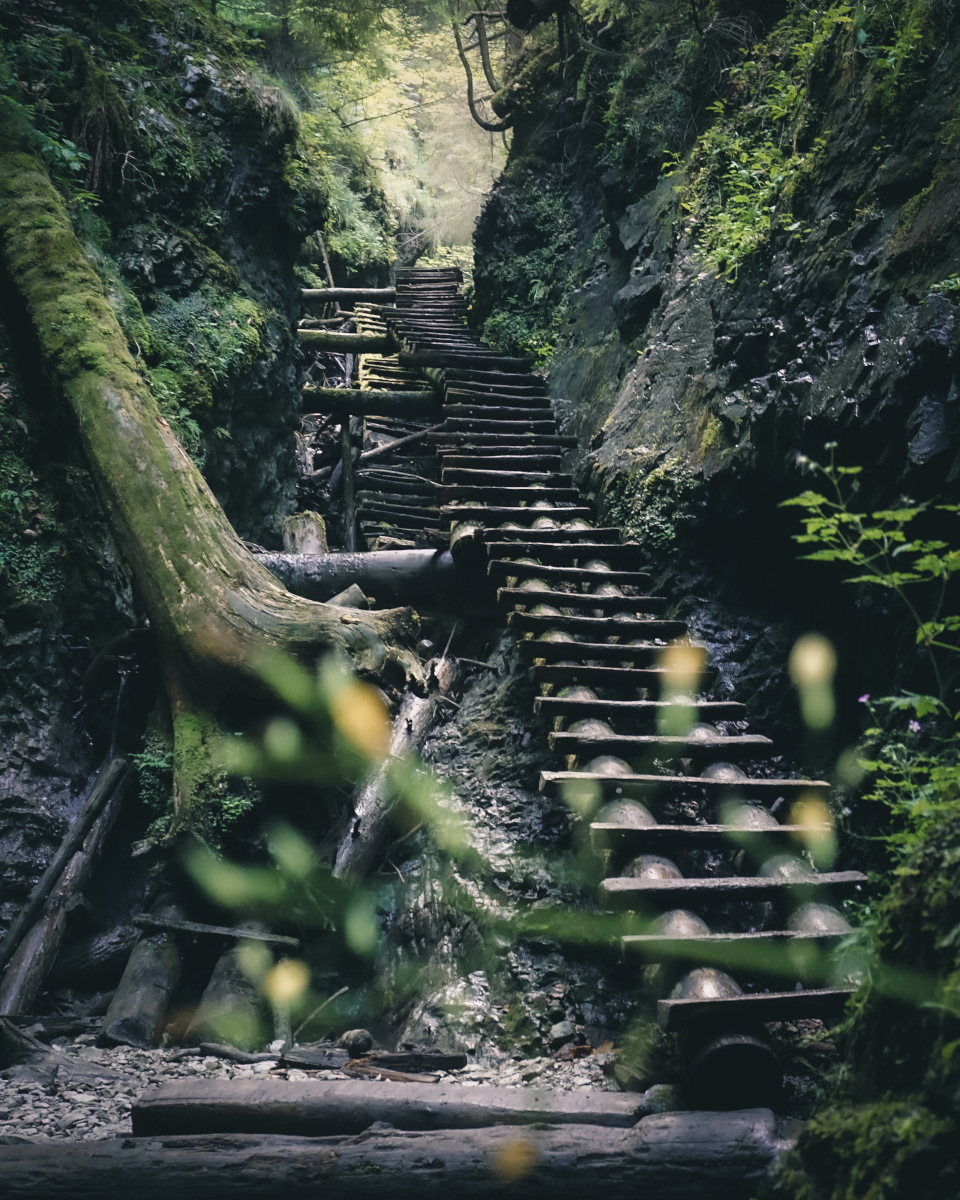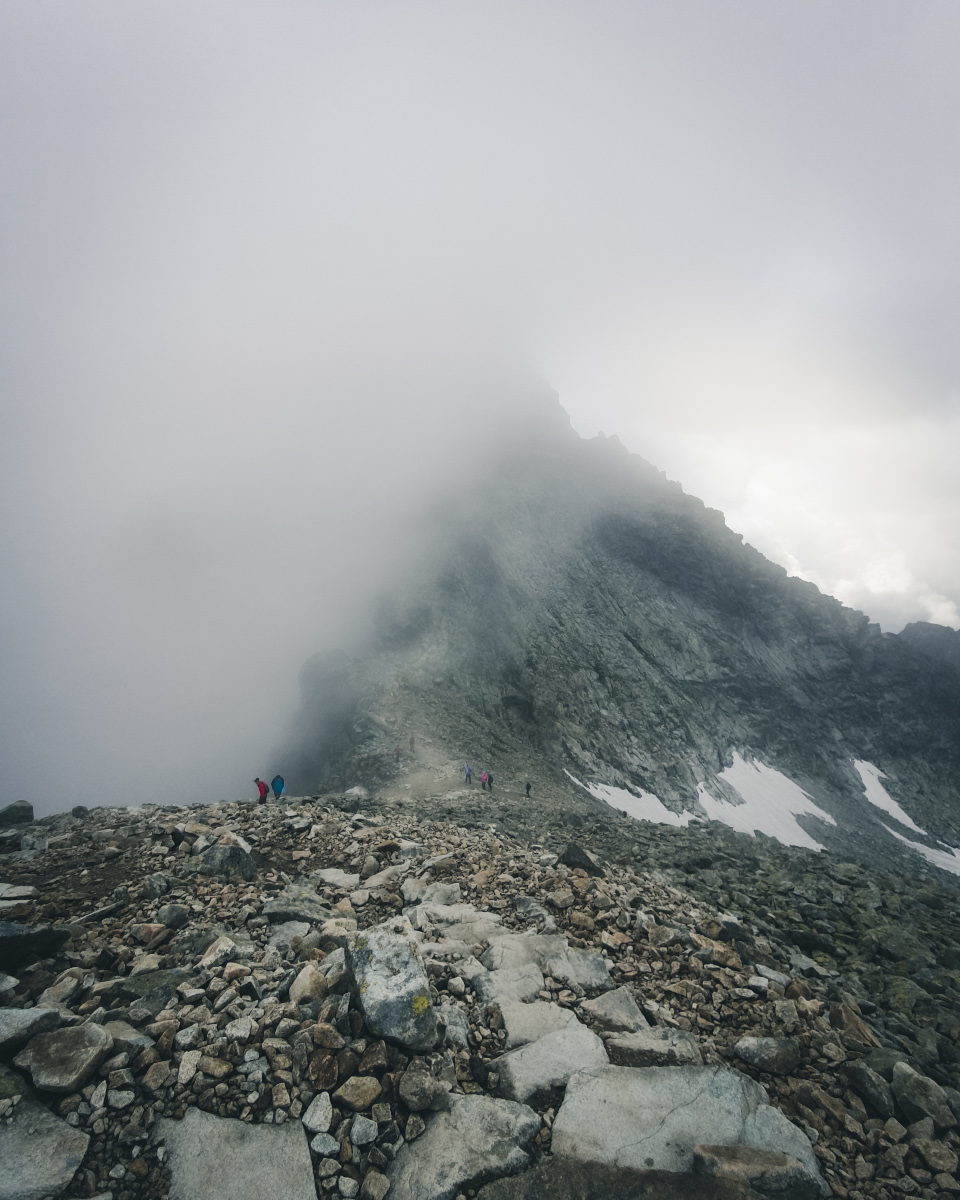Slovakia is a small state in the center of Europe. Many people do not know that more than two thirds of the area of Slovakia is mountainous and belongs to the Carpathian arc. The rest is made up of foothills of the Pannonian Plain and a small part of the Vienna Basin. Because of this diverse landscape, Slovakia is especially popular with outdoor and hiking tourists. About 30% of the country’s land area is protected, so a trip to Slovakia promises adventures in countless nature parks. Most tourists are drawn to the High Tatras, the Low Tatras, the Slovak Paradise or the Small and Large Fatras. There, green forests, crystal clear mountain lakes, deep caves or raging waterfalls guarantee breathtaking nature experiences. Furthermore, countless mountains await you, and the number of two-thousand-meter peaks is about 100. In Slovakia you can experience brown bears, the most beautiful ice caves in Europe or picturesque Slovak villages. The country has something for everyone, making it a great destination.
On my travel blog I will show you beautiful hikes that I have done myself in Slovakia and give you helpful tips and information especially about hiking in Slovakia. I’m glad you came to my travel blog and hope you enjoy reading my travelogues.
The Slovak nature parks and hiking opportunities
Although Slovakia is only about the size of Lower Saxony, the country has 9 national parks and 800 other protected natural areas. The most famous protected area is the Tatra National Park, which covers the “smallest high mountain range in the world”, the High Tatras. It is the hiker’s paradise of Slovakia. Other popular destinations are the Small and Large Fatra Mountains in the west of the country, the Slovak Paradise National Park or the Poloniny National Park in the eastern part of Slovakia. Furthermore, surreal ice caves, raging waterfalls, crystal clear glacial lakes and other great natural spectacles await you here. The entire country offers excellent opportunities for hiking. In total, over 30% of the country is protected. So, active vacationers and nature lovers will not be disappointed in Slovakia.
Best time to go hiking and weather in Slovakia
For active vacations and hiking I recommend you to travel to Slovakia between May and October. Between November and April, you can expect snow in the mountain regions, but even in July there can still be snowfields in the High Tatras. Between November 1 and June 15, hiking trails in the High Tatras above the mountain huts are even closed. In midsummer Slovakia is pleasantly warm, but thunderstorms are more frequent and the summer months are the rainiest months of the year.
On the following website you can find detailed information about the climate in Slovakia. Before you go on a hike, you should always read the weather forecast first. For this purpose, you can check the website of the Slovak Mountain Rescue Service or this website.
Blog articles and travelogues about my hikes in Slovakia
Below you can see blog posts about my round trip in Slovakia. In these blog articles I present you beautiful hikes that I have mastered myself during my trip. Here you will find a lot of tips for hiking and personal impressions of the Slovak nature.
-
AdventureEuropeHikingNature
Diverse Hike to the most beautiful Waterfalls in the High Tatras
by ArneAnyone who has ever looked for a European alternative to the Alps have already come across the High Tatras. In fact, …
-
The High Tatras are a popular tourist destination in Slovakia. In addition, the mountains, which are assigned to the Carpathian Mountains, …
-
The High Tatras are part of the Tatra Mountains, which in turn are part of the Carpathian Mountains. Two thirds of …
-
The Slovak Paradise National Park (Slovenský raj) is in eastern Slovakia and is a natural continuation of the slopes of the …
Hiking trails in Slovakia
There are over 14,000 kilometers of marked hiking trails in Slovakia, managed by national park administrations or local tourism organizations. In general, the hiking trails in Slovakia are in very good condition. You can find a selection of marked hiking trails for example on the website of the Slovak Tourism Organization.
Marking of the hiking trails
Slovakia has one of the best marking systems in the world. The basic shape of the road signs is a square with three horizontal stripes. While the middle stripe has the colors red, blue, green or yellow, the outer two are white reflective stripes. These markers are located on stones, trees, or boards. The additional signposts in Slovakia usually indicate the current altitude, the destination, and the hiking time without breaks there.
Red = long distance hiking routes
Blue = long distance routes, connecting important places
Green = additional routes, hiking routes from valleys to mountain ranges
Yellow = short connections between different routes
There are also local hiking routes marked according to this method. Instead of the three stripes, there are two triangles in the square. While the lower triangle is white, the upper one bears one of the four colors already mentioned.
In addition, there are trail signs that point to specific themes along the trail. For example, a large triangle indicates a viewpoint, an arch indicates a cave, and a house indicates a hut or shelter. You can find more explanations on this website.
If you are looking for more information about hiking or hiking routes in Slovakia, check out these hiking guides. The books are small and handy, provide useful hiking information and detailed descriptions of the hikes. I’ve been able to discover great hikes through them that I wouldn’t have found without these books.
Safety tips for hiking in Slovakia
- In case of emergency, dial 112 or 18300 for the Slovak mountain rescue service
- Take out an international health insurance (mountain rescue can be expensive)
- Let someone know where you are hiking to
- Book your accommodation in advance and cancel if something comes up
- Check the weather forecast before hiking (Počasie oder Horská záchranná služba)
- Hike only on marked trails
- Wear appropriate hiking shoes and clothing
- Take a first aid kit with you
- Take a hiking map (I use the app Locus Map)
- Take enough water and provisions with you
- An encounter with brown bears is extremely unlikely. If contact is made, remain calm and move away slowly. Do not run away and do not make any frantic movements
If you are unsure or prefer to go hiking in company, there is a possibility to join a guided tour. You don’t have to worry about route planning, food or transportation, but you can completely focus on the beauty of Slovak nature. I recommend booking a tour through the portal of Viator, where countless activities around the world can be booked easily and safely.
Hiking equipment in Slovakia
Depending on the region, the altitude, the season, and the length of the hike, you need different equipment for hiking. Everyone has their own preferences when it comes to equipment, but below I’ll give you an overview of my own equipment. Generally, I buy my hiking equipment at regional outdoor stores. The following links lead to Amazon to get an idea of the respective equipment.
Hiking boots
Most important are sensible hiking shoes or hiking boots. These must fit perfectly and should therefore be tried on by a specialist before buying. I personally wear the hiking boots Trovat Advanced II High GTX from Mammut** for long mountain tours and the hiking shoes Peakfreak Venture Waterproof from Columbia** for easy hikes. I recommend hiking boots for the High Tatras.
Equally important, in my opinion, are hiking socks that fit your feet, warm, or repel moisture. Make sure that the socks do not wrinkle, because that’s how blisters occur. I wear the TK2 Cool Wandersocken from Falke** and in very warm temperatures the Hiking Light Merino Mid Socks from CEP**
Clothes for hiking
When it comes to hiking pants, there are countless designs. There are waterproof, quick-drying, warming, or lightweight pants. You have to decide for yourself what the best pants are for you. I wear hiking pants from Frilufts and Columbia**
Furthermore, a short functional shirt (Schöffel**) in summer and/or a long functional shirt (Berghaus**) should not be missing. A warmer top such as fleece sweater (Vaude Rosemoor Fleece**) or jacket should also be present. Extremely important is a good rain jacket that keeps you dry and warm in thunderstorms and rain. For long tours lasting several days, underwear made of odorless merino wool is also recommended (Schöffel Boxershorts**).
Equipment for hiking
There are different backpacks for hiking. Some are only suitable for day trips and others are suitable for multi-day hut tours. For multi-day tours, I recommend a size of at least 35 liters. I use the 38-liter backpack Traverse 38 S von Ortovox** For day tours, a 20-to-30-liter backpack such as the Crosstrail 24 Lt** is sufficient. Make sure you have an integrated rain cover. A hydration bladder is also practical, which can be stowed in the backpack and facilitates drinking**
In the alpine terrain in the High Tatras hiking poles can be interesting for you. These are available in all possible designs and a consultation in a specialty store is recommended.
If you want to spend the night in the Slovak mountain huts, bring a hut sleeping bag. There are very light and stowable sleeping bags** especially for trekking. Furthermore, you are not allowed to enter the huts with hiking boots, so you must have hut shoes or slippers with you. I use conventional slippers for the case.
Especially in the high mountains there is no protection from the sun in summer. Therefore, wear headgear and remember to wear enough sunscreen. Also, tick protection is recommended in lower forest regions.
Accommodation and mountain huts for multi-day hikes
There are over 70 mountain huts in Slovakia that offer hikers an overnight stay in the mountains. The level of mountain huts is increasingly adapting to Western European standards. A bed should be booked in advance, especially in summer. You can find more information and reservation possibilities on this Slovak website or on the website of mountainhut.info. There you can also find an overview of all mountain huts.
Of course, there is also the possibility to stay in hotels, hostels, or guesthouses in the low-lying regions. I recommend staying in one of the many authentic Slovak private accommodations. You’ll find these mostly family-run guesthouses throughout the country. Many of them stay away from the well-known online portals, so you’ll have to call ahead or ask at the tourist information office in the village. The easiest way, however, is to book, for example, via Booking.com*
How to get to the Slovak hiking areas
You are most flexible with your own car. Road conditions in Slovakia are good. There are many parking places for hikers in Slovakia, but they are often subject to charges. Especially at the popular hiking routes you pay about 10 Euro per day. Note that you need a vignette for Slovakia, which costs 10 euros for 10 days and 14 euros for 30 days for a normal car.
The country has a good train and bus network, so you can reach all regions by public transport. Train and bus tickets are comparatively very cheap in Slovakia. You can find more information and timetables on the website of the railroad company or in the app cp.sk. There is usually a bus stop at the starting points of popular hikes. For remote routes, you often have to plan an extra way from the stop to the start of the hike. It is easier to book a rental car.
I hope you enjoyed my travelogue about hiking in Slovakia. On my Slovakia Blog I show you other beautiful travel destinations in Slovakia and share valuable tips and experiences for your trip to Slovakia. Did you like my blog post? Was I able to help you? Then I would be happy if you recommend my travel blog, leave a comment, or follow me on Instagram. Thanks for reading and have fun on your vacation in Slovakia.
If you are looking for a travel guide to Slovakia, check out this book. I personally like this travel guide series very much. The authors give travel tips especially for individual and low budget travelers. Moreover, not only the well-known sights are described, but also more unknown places are mentioned.
The references marked with an asterisk (*) are so-called commission links. If you click on such a referral link and buy something, I get a small commission from the provider. For you, the price does not change! I see it as a small thank you for my work and look forward to any support.









